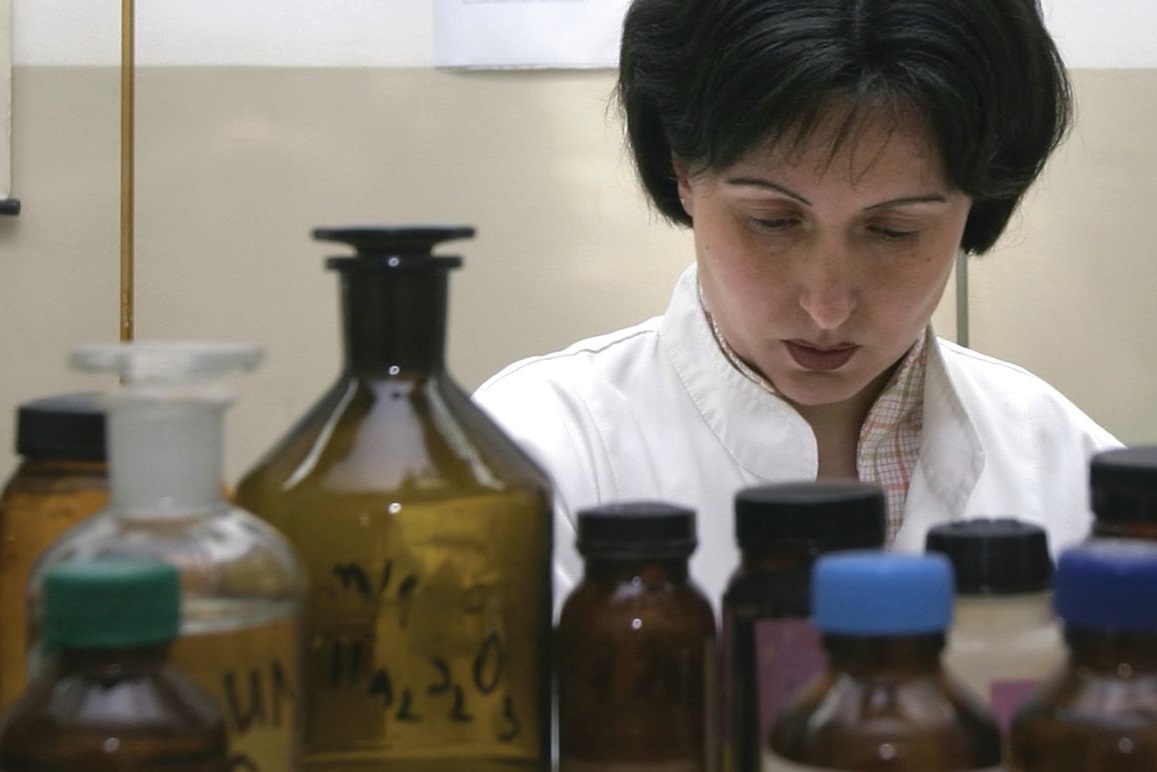New products: Build, borrow or buy?
Dr. Robert M. Gresham, Contributing Editor | TLT Lubrication Fundamentals February 2012
These four scenarios will help you decide which option is best for your company.
 Asset management equally applies to R&D departments in terms of both the physical assets of the lab and also intellectual property.
Asset management equally applies to R&D departments in terms of both the physical assets of the lab and also intellectual property.
www.canstockphoto.com
KEY CONCEPTS
•
Many misconceptions still exist about how R&D departments function.
•
A productive R&D department needs the right mix of personnel and lab resources for a particular task.
•
Managers have several ways of acquiring new technologies and products.
MOST PEOPLE WHO DON’T SPEND TIME AROUND RESEARCH AND DEVELOPMENT (R&D) DEPARTMENTS appear to have some interesting ideas about what goes on there, how it is done and even who does it. Further, they equally seem to have little idea where new products come from—other than images of the cauldrons of the alchemist. Indeed, in many companies the R&D department is a rather obscure part of the operation, yet its output can be critical to the longevity of the company.
You frequently hear the term asset management applied to manufacturing facilities. Asset management equally applies to R&D departments, not only in terms of the physical assets of the lab and its attendant hardware but also the department’s intellectual property. This includes the combination of patents, licenses, product approvals and, of course, the in-house expertise of the lab rats (the human variety) themselves.
The latter group is most difficult to assess and usually inconsistently done. Do you count the number of doctorates, certified technicians, peer-reviewed papers, patents, awards, etc.? How do you put a number on an individual’s or R&D department’s relevant technical expertise and his (or its) cognizant understanding of how this expertise can impact the company’s markets?
Also, how do you measure the output of your R&D department? I think one telling measure is the percentage of sales from new products commercialized, say, in the last five years. Sales and R&D share a common dilemma in that it is difficult to answer certain almost unanswerable questions. It is easy and all too common for sales folks to scream, “We don’t have any new products, and what we have aren’t any good!” Equally R&D screams, “You couldn’t sell a life raft to a drowning man!” Even if sales are reasonably good, and the R&D department seems to be functioning well, the questions, “What could you or should you have sold?” or “What could you or should you have invented?” continue to nag.
Corporate R&D departments vary considerably depending on the size of the company, the company’s business and the state of the science or technology that encompasses that business area. Indeed, even the areas of responsibility can vary considerably. Some R&D departments also are responsible for quality assurance and/or customer technical service and/or plant technical (providing technical assistance to the manufacturing operation). Other R&D departments are responsible for none of these.
In terms of budget, few companies, regardless of how their R&D is deployed, exceed 10% or much less than 3% of sales. So in a small company where the R&D budget is, say, 5% and the department is often responsible for quality, technical service, etc., that company likely does virtually no “R” and precious little “D.”
These considerations also define physical resources as well. Do you have one large lab or multiple small labs? Do they have all the latest gadgets? How much and what kind of analytical capability do you need, and how much can be contracted to outside analytical labs?
Given these realities, how is an R&D manager able to staff his department? If the company has a small budget, and diverse areas of responsibility, then having a stable of high-priced, hot-shot PhDs is not cost effective. Many of the daily tasks can easily be handled by a combination of trained technicians, bachelor’s- and master’s-level people, perhaps with one PhD to oversee things.
On the other hand, if the department is tasked with development of long-term cutting edge science intended to create truly new innovative products or processes—true research—then PhDs, preferably with relevant post-doctoral experience, are essential. So the staffing and facilities must fit the company’s approach to the business and the markets. Everyone hopes the budget will fit the needs of the business (
not a foregone conclusion).
So let’s take as a given that we have an R&D department that fits our business, and it routinely cranks out enough new products that 20% of the company’s sales comes from new products developed in the last five years—which is pretty good! But suppose the mavens that run the company have determined (in conjunction, we hope, with the R&D manager) that the company needs to move in a new direction. The R&D manager usually ends up with the task of figuring out how to move the company in that direction. Believe me, it is not by running down to the lab and screaming, “You clowns better invent something fast or you will be out of a job!” However, it does happen. Rather a business case needs to be made for the correct approach.
When approaching a new (at least to the company) technology area, the manager doesn’t have the luxury of a knowledgeable staff or a lab necessarily designed and equipped for the new kind of technology. He may need to hire and train new people, and he may need to re-equip or redesign his lab facilities. Before he makes these kinds of expensive decisions, he might be helped by considering the following scenarios:
1.
The technology is mature and there are many competitors. In this situation, where the market is moving slowly and there are a number of players, margins are likely small and developing truly new technology will be a long-term expensive proposition. The likelihood of the lab folks coming up with anything but “me-too” products in the short-term is remote. A license of technology with so much competition would further erode potential profitability. It likely makes sense to purchase one or more companies to establish a presence and gain immediate market share.
2.
The technology is moving rapidly and there are many competitors. Here the technology and market are moving rapidly, and the direction of the market is also known or there wouldn’t be a lot of competition already. Profitability is likely to still be good. Thus, it is unlikely another new player would be able to ramp up his R&D effort fast enough to catch up and surpass the fast-moving technology from all the competition. Purchasing a company is an option but riskier as you might pick a company with technology that won’t hold up over time. Licensing could be a good option, as it is low risk, should you choose the wrong developing technology. Not much money will have been spent. The license could be a jump start for getting your own R&D department up to speed in a hurry, while enjoying immediate sales to finance the department build up.
3.
The technology is mature and there are few competitors. Here, with a slowly moving market, there is time to learn to develop your own products and technology. It is relatively risk-free, since you are using largely fixed assets, but with few competitors one would need to ask the profit potential for this kind of business.
4.
The technology is moving rapidly and there are few competitors. This is a highly fluid situation. If your R&D has some unique talents or ideas for this market, it might make sense to try to have an impact. It might also make sense, especially if you are a small company with limited R&D resources, to simply monitor the market and then either obtain a license or acquire the company that seems to have the best technological edge.
 Sales and R&D share a common dilemma in that it is difficult to answer certain almost unanswerable questions.
Sales and R&D share a common dilemma in that it is difficult to answer certain almost unanswerable questions.
www.canstockphoto.com
So when getting into new product technology areas, the “make or buy” decision—that is, do I invent it myself or buy the technology from someone else—is not simple. However, the stockholders will demand you get the decision right the first time.
 Bob Gresham is STLE’s director of professional development. You can reach him at rgresham@stle.org
Bob Gresham is STLE’s director of professional development. You can reach him at rgresham@stle.org.